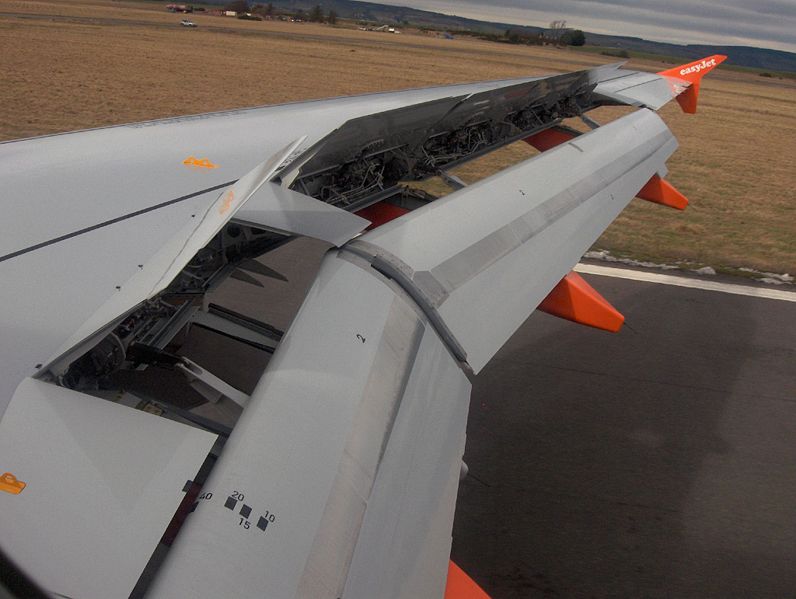Landing is very similar to takeoff, just
in reverse order, with a few additions.
The similarities of landing with takeoff is that, once again the flaps are lowered. In this case, rather then to generate a greater lift so that altitude can be achieved, its to keep as much lift as possible while lowering the velocity as low as can be achieved. The result of this is a much slower air speed, but a slow descent, caused by the force of lift being less then the force of gravity exerted on the aircraft.
Another deviation from takeoff happens as soon as the aircraft touches ground. Another addition on the airfoil, specifically used during landing are the braking flaps. These are components of the airfoil that are hydraulically activate on the topside of the airfoil. These air brakes basically create a reverse airfoil, creating a higher pressure zone on the top, and a lower on the bottom, exerting an overall net force down. These air brakes were introduced when it was found that airplanes would "bounce" after one touchdown. The aircraft would touch down, and the recoil force would send the airplane back in the air, sometimes unpredictably. This caused issues for the pilots, so air brakes were introduced, and they essentially force the airplane to stay on the ground. A picture of activated air brakes can be found below.

The aircraft has significantly slowed down since its flight phase, but are generally still going very fast, therefore the braking system on most modern aircraft are brakes on the wheels and they even set their turbines in reverse, causing a huge net force opposing forward motion, solely for the reason of slowing down the plane.
The similarities of landing with takeoff is that, once again the flaps are lowered. In this case, rather then to generate a greater lift so that altitude can be achieved, its to keep as much lift as possible while lowering the velocity as low as can be achieved. The result of this is a much slower air speed, but a slow descent, caused by the force of lift being less then the force of gravity exerted on the aircraft.
Another deviation from takeoff happens as soon as the aircraft touches ground. Another addition on the airfoil, specifically used during landing are the braking flaps. These are components of the airfoil that are hydraulically activate on the topside of the airfoil. These air brakes basically create a reverse airfoil, creating a higher pressure zone on the top, and a lower on the bottom, exerting an overall net force down. These air brakes were introduced when it was found that airplanes would "bounce" after one touchdown. The aircraft would touch down, and the recoil force would send the airplane back in the air, sometimes unpredictably. This caused issues for the pilots, so air brakes were introduced, and they essentially force the airplane to stay on the ground. A picture of activated air brakes can be found below.
The aircraft has significantly slowed down since its flight phase, but are generally still going very fast, therefore the braking system on most modern aircraft are brakes on the wheels and they even set their turbines in reverse, causing a huge net force opposing forward motion, solely for the reason of slowing down the plane.